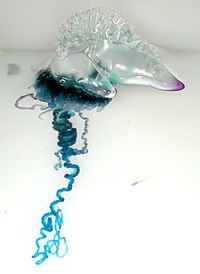
Photo from wikipedia
Ground motion models (GMMs) are an essential tool for seismic hazard analysis. They are used for developing predictive relationships to estimate the expected levels of seismic ground shaking through the… Click to show full abstract
Ground motion models (GMMs) are an essential tool for seismic hazard analysis. They are used for developing predictive relationships to estimate the expected levels of seismic ground shaking through the ground motion parameters (GMPs). There is limited recorded data on the stable continental regions (SCR) such as Peninsular India (PI), and Central and North Eastern America (CENA), and GMMs are developed either by hybrid or stochastic methods. In this study, an effort has been made to develop a GMM for the PI region by compiling the recorded data from the CENA and PI regions, as well as from the Near Source Strong (NESS) data. An artificial neural network coupled with the genetic algorithm is considered to develop GMMs. So, the GMP-1 model is developed for various GMPs for both RotD50 and vertical components, while the GMP-2 model is developed for RotD50 components of peak ground acceleration (PGA), peak ground velocity (PGV), and the 5% damped pseudo-spectral acceleration (PSA) for periods between 0.01 and 3 s. The developed models are valid for magnitudes between 2–7.7 Mw and 0 to 1500 km Joyner–Boore distance. In addition, a parametric study is performed with the developed models for various combinations of predictor variables, and it is noticed that both the models capture the trend and attenuation pattern observed in the recorded data for all the GMPs. Moreover, the GMP-2 model predictions agree well with the recorded data compared with the candidate GMMs developed in the NGA-EAST project. A comparison of the GMP-2 models with the recorded data in the PI region indicates the robustness and effectiveness of the developed model in providing reasonable estimates of GMPs, implying its applicability to tectonic environments similar to the CENA region.
Journal Title: Earthquake Spectra
Year Published: 2023
Link to full text (if available)
Share on Social Media: Sign Up to like & get
recommendations!